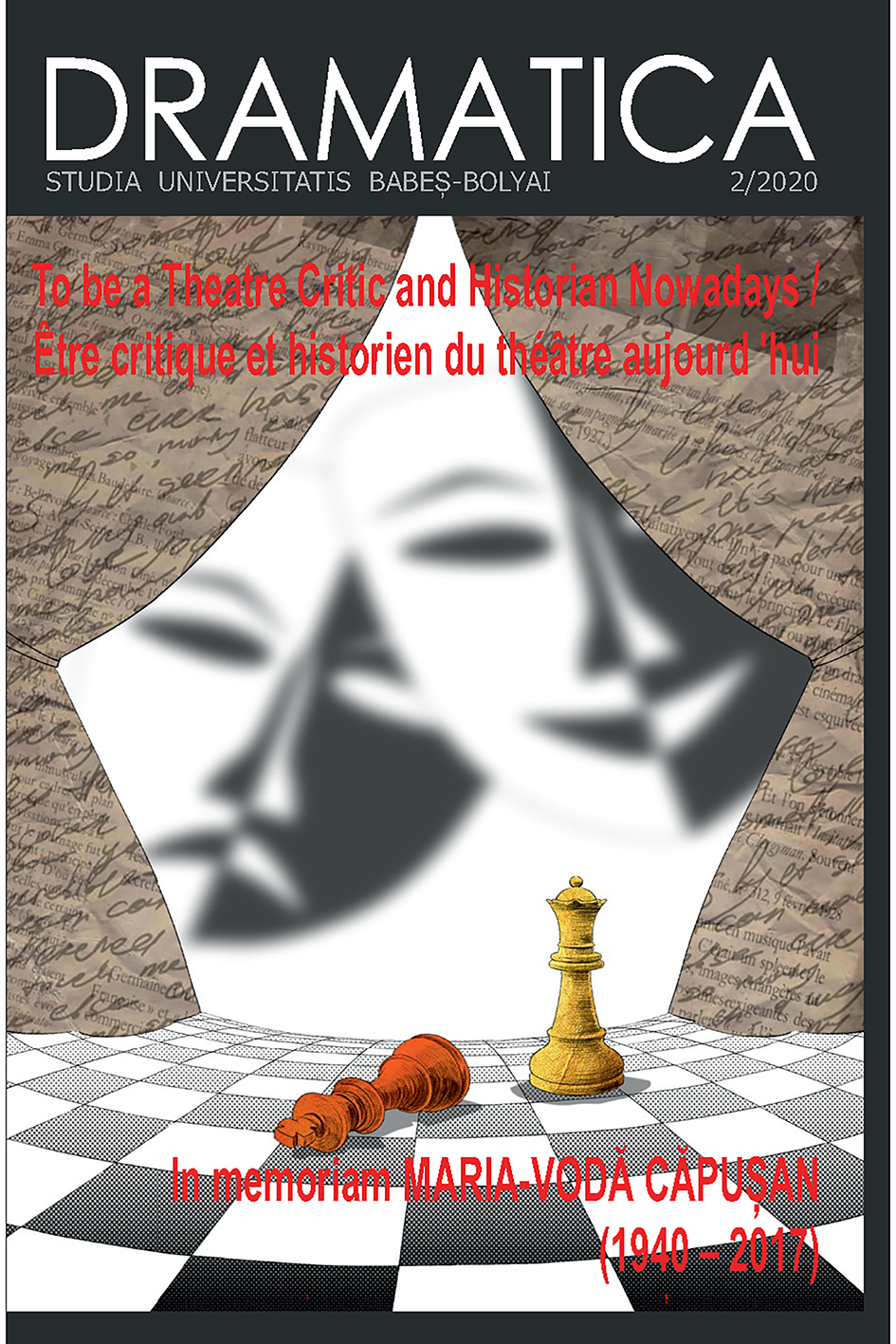Réflexions sur l’espace comique. L’exemple du « Mariage de Figaro »
DOI:
https://doi.org/10.24193/subbdrama.2020.2.01Keywords:
Beaumarchais, The Marriage of Figaro, comic space, dramatic techniques, armchair, tragedy, spatial beings, social beings.Abstract
Reflections on Comic Space. The Example of The Marriage of Figaro. This study shows from the example of the Marriage of Figaro how the space defined by the dramatic text within fiction has a creative energy and a range of meaning which can be compared to that of the speech or the acting of the characters. Suzanne’s armchair is the centre of a long play of scenes in the 1st act: this inert object then constitutes the crux of the action and embodies the force of chance fighting against the Figaro industry, a bit like fate in the tragedy fights against the active will of the heroes. The corner of the park under the chestnut trees in the last act plays the same role by precipitating all the intrigue and all the characters, in favour of the night, in a game of masks, misunderstandings and deceptions which summarize the issues of the intrigue and untie it. Figaro’s monologue located at the entrance to this dramatic space gives the key to its functioning: human life is governed by Chance, which is the god of comedy. Consequently, the question of Being becomes that of being there. This awareness by Figaro opens at the heart of comic space a subjectivation by spatialization, the secret of which is that we are spatial beings, that is to say social beings, defined in everything and for everything by our relationships and by the successive situations in which we form, act and live: lucid and disillusioned awareness of our constitutive “spatiality”.
References
Barbéris, Pierre. « Un Hamlet comique : Figaro dans son monologue. » Analyses et réflexions sur Le Mariage de Figaro. Paris : Ellipses, 1985.
Billaz, André. « Voltaire traducteur de Shakespeare et de la Bible : philosophie implicite d’une pratique traductrice. » Revue d’Histoire littéraire de la France, no 3 (1997) : 372-380.
Beaumarchais. Théâtre. Éd. Jean-Pierre de Beaumarchais. Paris : Classiques Garnier, 1980.
Beaumarchais. Œuvres. Éd. Pierre et Jacqueline Larthomas. Paris : Gallimard, 1988.
Beaumarchais, Jean Pierre de. « Le Mariage de Figaro : une conquête de l’espace. » Le Siècle de Voltaire. Hommage à René Pomeau. Oxford : Voltaire Foundation, 1987, 83-88.
Dagen, Jean. « Figaro et le théâtre à effet. » Revue d’Histoire Littéraire de la France, no 4 (2000) : 1159-1169.
Dandrey, Patrick. « La comédie, espace “trivial”. À propos des Contens d’Odet de Turnèbe. » Revue d’Histoire du Théâtre, no 4 (1984) : 323-340.
Ehrard, Jean. « La société du Mariage de Figaro. » Mélanges Jean Fabre, Approches des Lumières. Paris : Klincksieck, 1974, 169-180.
Larthomas, Pierre. «La toise de Figaro ou Beaumarchais metteur en scène.» D’Eschyle à Genet : hommage à Francis Pruner. Dijon : Éditions universitaires, 1986, 219-224.
Michaud, Guy. « L’intrigue et les ressorts du comique dans Le Mariage de Figaro. » Mélanges d’esthétique et de science de l’art offerts à Étienne Souriau. Paris : Nizet, 1952, 189-203.
Nablow, Ralph A. « Beaumarchais, Figaro’s monologue and Voltaire’s Pauvre Diable. » Romance Notes, Winter (1987) : 109-114.
Pomeau, René. Beaumarchais ou la bizarre destinée. Paris : PUF, 1987.
Scherer, Jacques. La Dramaturgie de Beaumarchais. Paris : Nizet, 1954.
Turnèbe, Odet de. Les Contens. Comédie nouvelle en prose française. Texte établi, présenté et annoté par Charles Mazouer. Paris : Honoré Champion, 2020.
Downloads
Published
How to Cite
Issue
Section
License
Copyright (c) 2020 Studia Universitatis Babeș-Bolyai Dramatica

This work is licensed under a Creative Commons Attribution-NonCommercial-NoDerivatives 4.0 International License.


